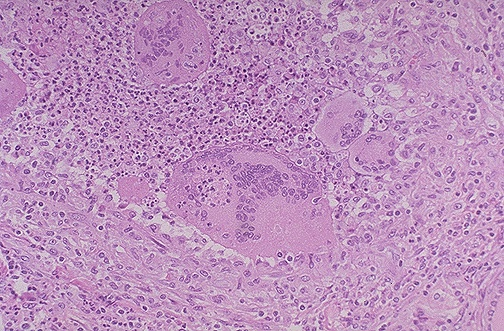
Pulmonologist Bruce Beck enjoys playing an occasional blues lick on his harmonica, but seeing his patients not only learn to play harmonica — but improve their lung and cardiac function in the process — is even more satisfying for him.
Bruce Beck, M.D., is medical director of the Pulmonary Rehabilitation Program at El Camino Hospital in Mountain View. The Harmonica Therapy Program was started in 2004 as part of the El Camino Better Breathers Support Group to help improve respiratory function for pulmonary patients. more than 30 people have gone through the program (elcaminohospital.org).
Q: how did the Harmonica Therapy Program get started?
A: one of our patients had heard about musician David Barrett, who is internationally known in the music world, lives locally, and who has been involved with harmonica for health for many years. Our patient went to one of Barrett’s harmonica-for-fun-and-health classes and returned, saying, “This is better than sliced bread. I can breathe so much better!” So we looked into it, and found that the University of Michigan was using harmonica therapy with their pulmonary patients, and had published information on its benefits. we asked David Barrett to give a lecture and harmonica instruction at our Better Breathers Club monthly meeting, and we then started a program to offer harmonica therapy to our pulmonary patients. two of Barrett’s students, Dennis Carelli and Jeff Ballard, teach harmonica to our pulmonary patients on the second and fourth Fridays of the month, and Mr. Barrett himself comes once a year in April to our Better Breathers Club to give an introductory lesson.
Q: what are the pulmonary benefits of using a harmonica?
A: it does three main things: the first benefit has to do with positive pressure when you are breathing out, or what we call pursed-lip breathing. The harmonica is a small instrument that forces you to do pursed-lip breathing. you have to blow air through a small cavity, and this produces positive pressure in the back of your lungs. it can keep the lungs open, and make them more efficient. we teach this breathing method in our rehab classes for people with emphysema and asthma, which are conditions where the lungs want to collapse. And, of course, with a harmonica you also make sounds on inhalation and exhalation.
The second thing that playing harmonica provides is control of your breathing. A lot of our patients are chronically short of breath, and they may have shallow breathing, and get panicked easily. It’s very uncomfortable to be short of breath. When you’re breathing into a harmonica, not only are you doing pursed-lip breathing and creating positive expiratory pressures, but you are actually slowing your breathing down. It’s the same thing as relaxing, and another way people achieve this is through meditation or other exercises that we give them. But playing harmonica is the same type of exercise, plus it produces sound. So not only does it slow down their breathing in order to play music, but they learn the message that if they slow down their breathing, they feel better. And it’s fun to carry around something that they can play.
Thirdly, a lot of these people are on oxygen (which can be difficult), and this helps them feel better about themselves. I think music, in general, helps people relax, and it’s a positive thing when they are able to listen to, as well as make, music. And, they also get to perform in front of people. So there are physiological and emotional reasons why people should be better, and I think anything that controls your breathing is going to help your endurance as well as your strength. In our Better Breathers’ eight-week rehab program, we talk about controlling breathing, using pursed-lip breathing, and (building) exercise tolerance.
I enjoy playing the harmonica myself, and I have experienced what people tell me they have experienced (physiologically). When you exhale through the harmonica, resistance makes the pressure go up inside when you breathe out. And when you’re breathing in, it’s like lifting weights because of the resistance.
Q: what type of patient benefits from harmonica therapy?
A: Our patients have intrinsic lung disease like emphysema, asthma and bronchiectasis. But I would also include people who have heart disease, because a lot of the symptoms are the same — such as shortness of breath. The person who benefits the most from harmonica therapy is someone with bad COPD (chronic obstructive pulmonary disease), emphysema, or pulmonary fibrosis — which makes your lungs stiff and makes you breathe shallowly. In COPD and emphysema, your lungs tend to collapse when you breathe out, and that’s why the pursed-lip breathing is so important. using the harmonica makes you “stretch your lungs,” as it were. I think it’s good for anybody with a lung or heart condition, but you don’t have to have either condition to feel better.
Using the harmonica becomes less of an exercise and more of something that you do for enjoyment. we have other things that we do with people to help exercise their lungs, and some of them are somewhat boring. But harmonica is not boring — it’s stimulating, particularly the blues. you can also be pretty flexible about what you do with the harmonica, and playing with groups of people makes it even better. we want to help people get more out of their day-to-day life, and that’s been our focus.
LJ Anderson writes on health matters every other Wednesday. she can be reached at or ljanderson.com.